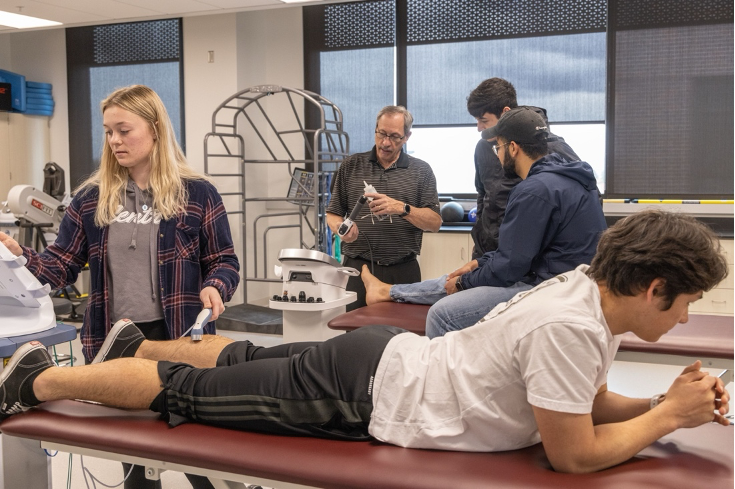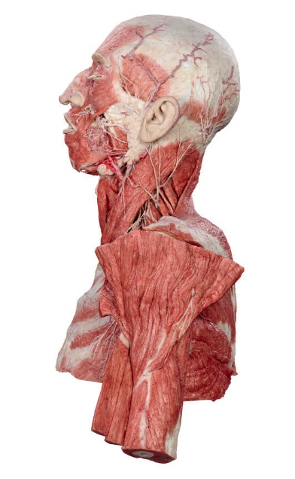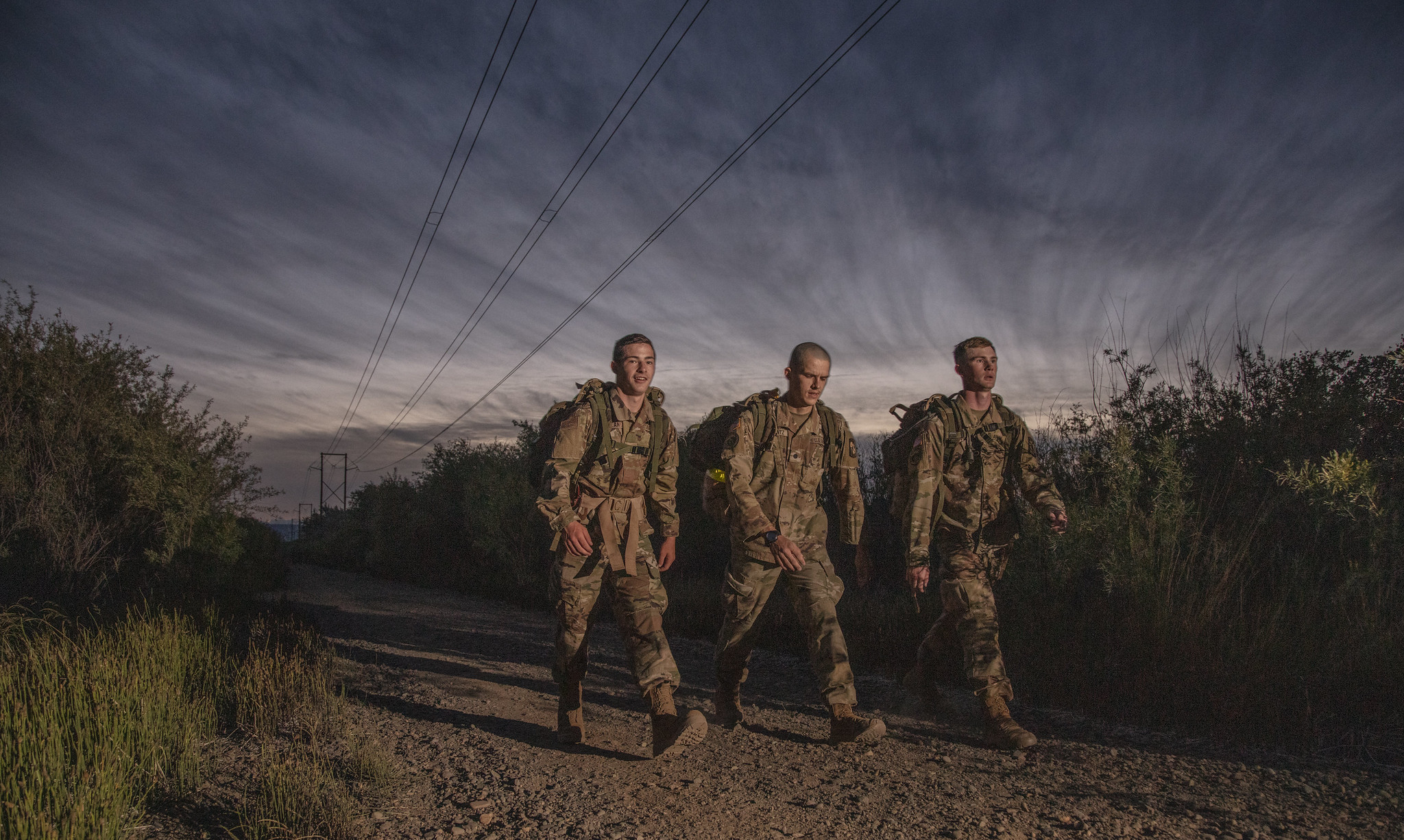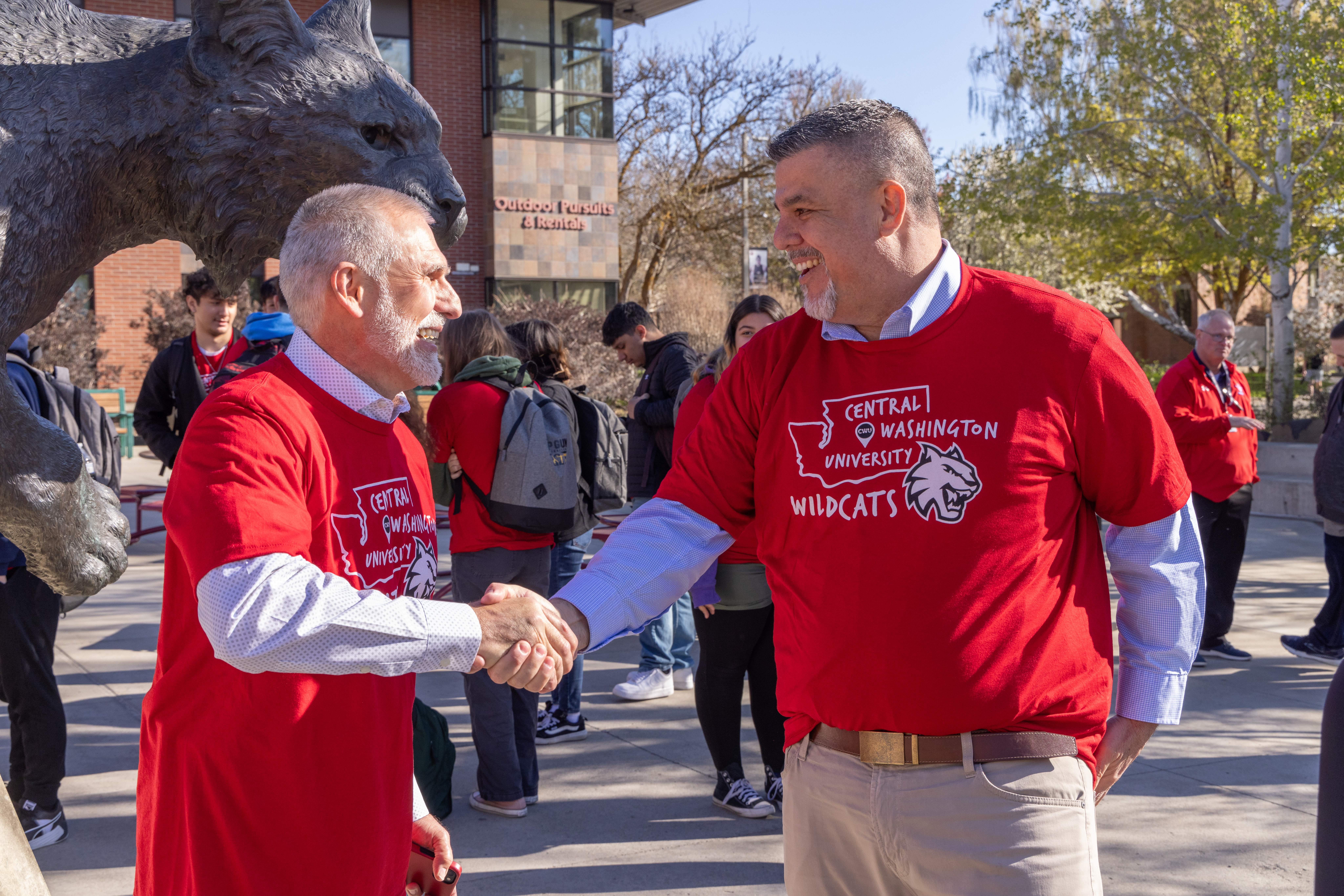Health Sciences
Experience cutting-edge technology in our new space.
CWU is invested in our Health Sciences programs as evidenced by our 12 state-of-the-art labs.
Explore Our Labs
-
Advanced Foods Laboratory
In the Advanced Food Labs, we explore the exciting intersections of science and food. Within our facility, you'll find two distinct areas dedicated to the study of nutrition and dietetics:
The Experimental Food Lab is where creativity and science unite to develop and test recipes that offer healthier alternatives. Equipped with state-of-the-art gas stoves, stainless steel countertops, commercial dishwashers, and a range of cutting-edge kitchen tools, students delve into the art of crafting a nutritious and tasty baked item. Here, you'll experiment with various cooking methods, temperatures, and times to discover how they influence the nutritional value of recipes, all in the pursuit of creating healthier options for the world.
In our Advanced Food Lab, our focus shifts to in-depth dietary needs. With a meticulous approach, we study foods tailored to various dietary requirements. This lab provides the opportunity to examine specialized diets and their impact on health and wellness. Equipped with advanced tools and resources, students delve into the intricacies of dietary science, helping lay the foundation for future careers grounded in the science of nutrition.
-
Clinical Physiology Laboratory
The Clinical Physiology Laboratory, Health Sciences room 123, is used for the instruction of laboratory classes as well as faculty and student research. This lab is designed specifically for the evaluation and treatment of medical issues that impact human health. Many of our Clinical Physiology students become Physical Therapists, Physician Assistants, Nurse Practioners, and Cardiac-Pulmonary Rehabilitation leaders. Unique features of this lab include the T170 treadmill equipped with a harness for those with orthopedic problems needing additional support, the Alter G anti-gravity treadmill that can reduce a person’s body weight by up to 80% using air pressure, this can be useful for injury or surgical rehabilitation, and a wheelchair treadmill that will evaluate metabolic functioning for those with spinal cord injuries.
Additionally, this lab includes a recumbent cycle and a Nu-step exercise machine, these modalities are often used in cardiac rehabilitation facilities. The laboratory is further equipped with an additional treadmill, Monarch exercise bikes, Cosmed ECG and metabolic carts, and a rowing machine. This is a working lab, with classes and research ongoing, however please feel free to visit the laboratory on your next visit to CWU.


-
Clinical Therapy Laboratory
The Clinical Therapy Laboratory at CWU is a cutting-edge facility within the Health Sciences department, designed to offer students a comprehensive learning experience in the field of Rehabilitation Sciences. This state-of-the-art lab provides students with the opportunity to gain hands-on experience ensuring they are well-prepared for future clinical settings.
In the lab, students can explore orthopedic assessments tools, learning how to evaluate and diagnose musculoskeletal conditions, and design effective treatment plans.
Students can explore into the world of therapeutic modalities, gaining practical knowledge of tools like ultrasound and laser therapy. The lab also offers dedicated space and high-quality resources for therapeutic exercise, allowing students to develop the skills needed to create and implement rehabilitation exercise programs. The Clinical Therapy lab operates within a modern and well-equipped facility, fostering a comfortable and productive learning environment.


-
Environmental Physiology Lab
The Environmental Physiology lab is a dedicated laboratory to exploring the relationship between the human body and various environmental factors. The primary goal is to investigate how environmental conditions such as temperate, altitude, humidity impact human physiology, performance and health. This lab will conduct comprehensive studies, gather data and analyze the effects of various environmental factors on the human body to better understand adaptation, limitations and potential interventions.
Researchers in the lab utilize a combination of controlled experiments, field studies, physiological assessments, and data analysis to draw conclusions about the body's response to changing environments. These methods may involve measuring heart rate, oxygen consumption, body temperature, blood pressure, respiratory parameters, and other physiological markers.

-
Exercise Physiology Laboratory
The Exercise Physiology Lab is designed to investigate the intricate relationship between exercise, the human body, and overall health. It is equipped with specialized equipment to facilitate a wide range of research and practical applications. The lab features several key components:
- Exercise Testing: This section includes treadmills, stationary bikes, ergometers, and other exercise equipment for conducting performance tests, endurance assessments, and the measurement of cardiovascular responses to exercise.
- Metabolic Analysis Tools: The lab is equipped with tools for metabolic testing, such as gas analyzers and metabolic carts, to measure oxygen consumption, carbon dioxide production, and other metabolic parameters during physical activity.
- Cardiovascular Monitoring: Instruments for monitoring heart rate, blood pressure, and cardiovascular responses before, during, and after exercise sessions.
- Data Analysis and Processing: Computers and software for data collection, analysis, and interpretation of various physiological parameters measured during exercise studies.
- Research and Experimentation Spaces: Areas designated for conducting controlled experiments, often involving both human subjects and specialized equipment to analyze specific aspects of exercise physiology.
- Teaching and Learning Facilities: Spaces for educational purposes, allowing students to observe, learn, and conduct their experiments under the supervision of experienced professionals.
- Collaboration Spaces: Collaborative zones where researchers and students can brainstorm, discuss findings, and work on joint projects.
- Safety and Emergency Equipment: Safety measures and emergency response equipment in place to ensure the well-being of participants during any study or experiment.
Researchers and students, utilize the lab to explore and apply findings that contribute to the fields of sports science, medicine, and public health.

-
Food Science Laboratory
The Food Science Lab is where science and cuisine converge. Our cutting-edge facility features gas stoves, stainless steel countertops, commercial dishwashers, and an array of other high-end kitchen gadgets for students to explore the fascinating relationship between food and science.
Here, students will experiment with various cooking methods, temperatures, and times to understand how they impact food's nutritional value. They will discover the secrets behind the science of food while using a variety of kitchen tools to prepare and sample recipes. A solid foundation will be laid for students interested in careers grounded in the science of nutrition. -
Laboratory for Anatomical Discovery
Human cadaveric studies have a long and rich history at CWU that spans nearly 40 years. Human anatomy is the study of shape and structure of the human body. Cadaveric anatomy offers a unique experiential learning opportunity for faculty, students, and visitors. Equally, it is also important to respect those individuals that donated their bodies for educational and research purposes, which is highlighted by visual messaging presented to all those that enter the Laboratory for Anatomical Discovery.
The Laboratory for Anatomical Discovery (LAD) allows individuals from all educational backgrounds to learn more about health, disease and anatomy using real human specimens. All anatomical specimens in LAD came from donors who willfully and legally donated their bodies for educational and research purposes. The laboratory houses embalmed cadavers, plastinated specimens, traditional synthetic models, and acrylic glass cross sections of the human body. The laboratory is also outfitted with technology that allows for the exchange of anatomical knowledge beyond CWU with those interested in studying the human body. CWU’s Laboratory for Anatomical Discovery is the first institute in the Pacific Northwest to secure plastinated models from Gubener Plastinate (Germany) the world’s largest Plastination center.

-
Metabolism Laboratory
The Department of Health Sciences Metabolism lab is dedicated to the advanced study of human health and performance. This laboratory is equipped with state-of-the-art equipment to assess several aspects of human health, including: over-sized treadmill, mechanically- and electrically-braked cycle ergometers, energy expenditure (metabolic carts and classical Douglas bag techniques), pulmonary testing (traditional spirometry and pulmonary pressures), diagnostic ultrasound units, software packages to assess aspects of heart and blood vessel function, blood gas analyses units, and instruments to assess metabolic blood profiles.
-
Morphology Laboratory
Central Washington University boasts a cutting-edge Morphology Lab that provides body composition and bone density assessment. Featuring state-of-the-art tools such as a Hologic Dual-Energy X-ray Absorptiometry (DXA), BODPOD, and TANITA Bioelectrical Impedance Analysis (BIA) units. This facility offers accurate measurements of bone mineral density, lean tissue mass, body fat percentage, and more. Advanced software supports data analysis, enabling interdisciplinary research on topics like obesity, metabolic disorders, and athlete health.
The lab also serves educational and clinical purposes, equipping students with hands-on experience and with essential evaluation skills. The collaborative laboratory environment fosters cross-disciplinary cooperation within Central Washington University's Health Sciences Department, making the Morphology Lab pivotal for research and health assessment innovation.

-
Neuromuscular Biomechanics Laboratory
The Neuromuscular Biomechanics Lab at CWU is a 3,000 square foot teaching and research space offering both undergraduate and graduate students a comprehensive learning experience. The beauty of our state-of-art lab is exhibited through its spaciousness. To perform overground motion analysis, we have a data collection volume that includes 14 force plates positioned in the middle of a 70-foot runway. A long runway allows for biomechanics students and research volunteers to speed up and slow down safely when performing dynamic trials, for example, running or cutting. Bordering the center of the runway is a rail system running 10-feet above the ground with 10 infra-red cameras and eight digital cameras distributed along its sides.
Additionally, our instrumented treadmill is housed within a separate data collection volume bordered by eight infra-red motion capture cameras and eight digital cameras. Both data collection volumes are equipped with wireless muscle activity systems and joint strength can be measured via an isokinetic dynamometer. Student seating is located between both the overground and treadmill collection volumes. Any data collection software that operates the motion capture systems can be viewed on a projection screen by both student and research volunteers. This affords a feeling of directness with the data collected and space for participants to perform human movement safely.


-
Sensory Evaluation Laboratory
The Sensory Evaluation Laboratory is a state-of-the-art facility designed to reduce bias and make human sensory judges a more reliable sensory instrument. While objective evaluation is rapid and reproducible, they only approximate the human senses. Well-controlled sensory evaluation produces data that may better predict human responses to a food. The laboratory has six isolated light-controlled sensory booths to reduce sensory bias that may affect the validity of the sensory tests.
Each booth has a tablet that provides the judge an interface to enter their sensory responses. In addition, each booth has a specially designed pass-through to prevent judges from being distracted by activities on the sensory analyst side of the room. Both sensory and objective data are analyzed using statistical tests that provides a valid evaluation of potential differences between foods. The importance of statistical analysis becomes more impactful for students working with real data. -
Wet Chemistry Lab
The Department of Health Sciences Wet Chemistry Lab provides bench space and a large array of analytical instruments geared towards exploring aspects of health at the molecular and cellular level. Here, students can assess several blood-based parameters related to clinical and performance outcomes. In addition, this laboratory space if fully equipped to examine molecular changes at the tissue level, including imaging capabilities. The Wet Chemistry Lab offers the ability for students and faculty to connect health outcomes with important biological mechanisms, contributing to a deeper understanding of human health and performance.
Tour Our Labs
Twelve distinct labs provide enriched, experiential learning





CWU News

CWU Army ROTC to host nighttime Norwegian Foot March this Friday
May 1, 2024
by Rune Torgersen

Grant-funded Limitless network brings Yakima students to CWU
May 1, 2024
by Rune Torgersen